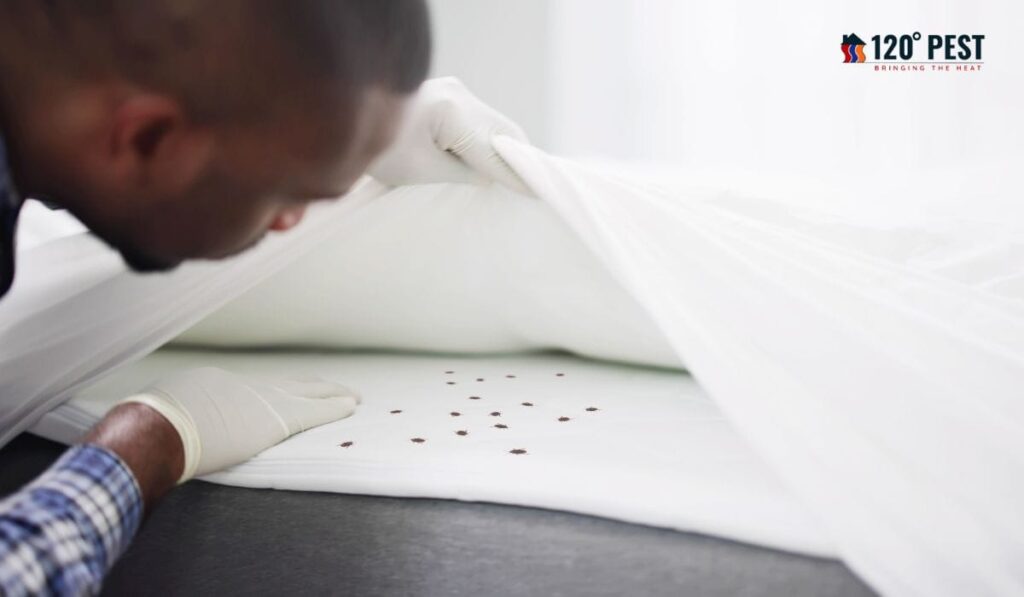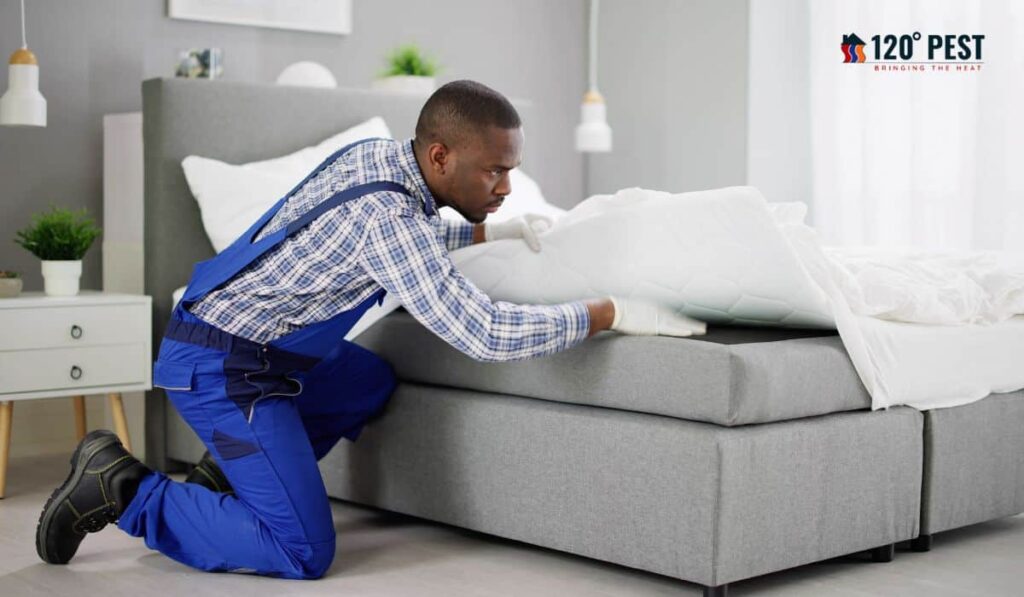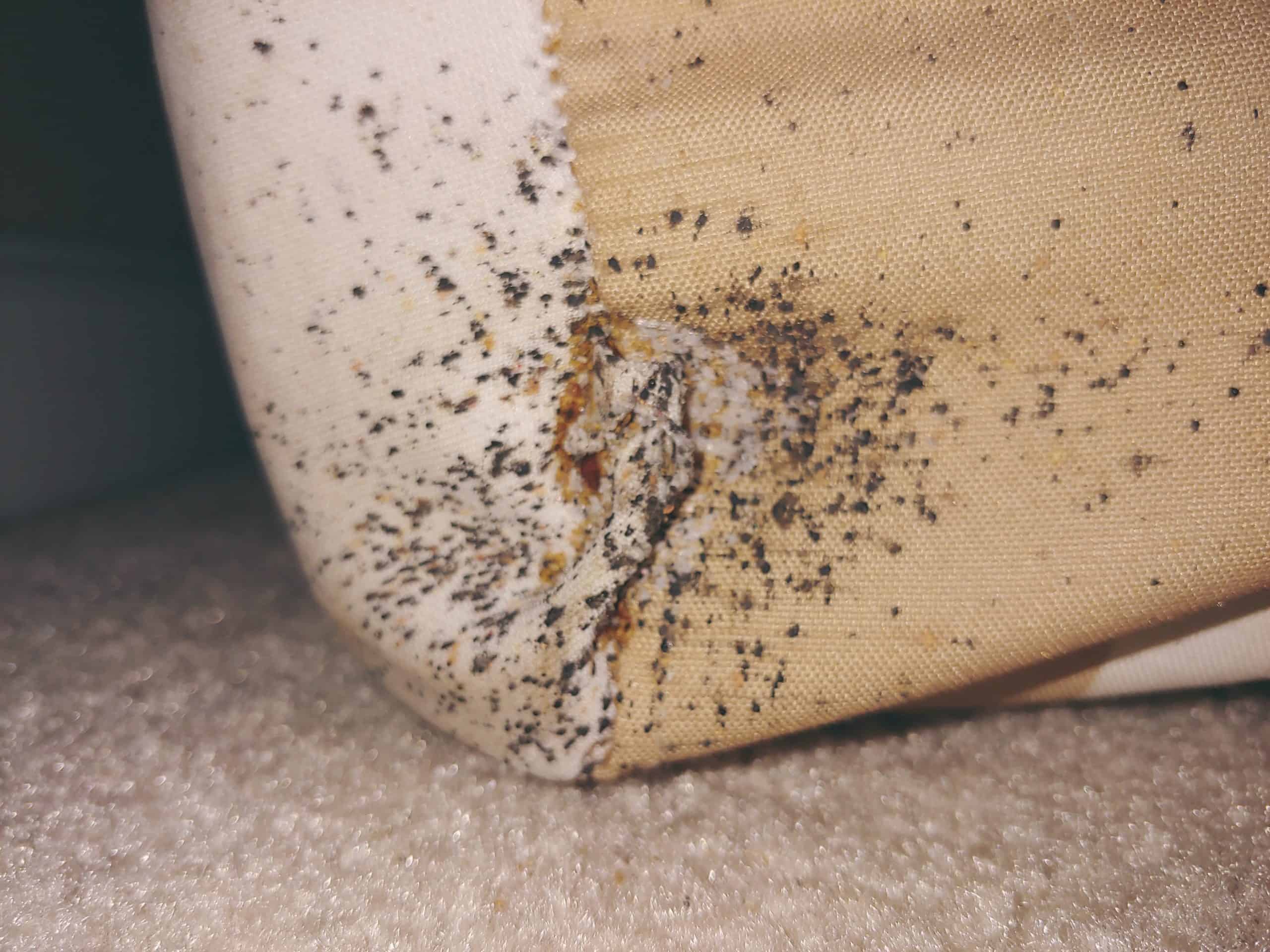Dealing with a bed bug infestation can be overwhelming, especially when faced with various company treatment options.
The methods range from thermal heat treatments, chemical applications, and freezing techniques to combinations of these approaches.
Deciphering what works best amidst these choices can be challenging.
This guide aims to demystify the available bed bug treatments, shedding light on their effectiveness and what each entails, allowing you to make an informed decision tailored to your needs.
Types of Bed Bug Treatments
You have bed bugs, and you call three different companies, and they all have different types of bed bug treatments.
How are you supposed to know what works or does not work?
Some companies want to heat your house, others want to freeze the bugs, and others want to spray some chemicals.
Then, it would help if you decided what prep you want to do.
No prep, low prep, and even cleaning your house for days requirements.
This will break down the basics of the treatments available for bed bugs and allow you to choose the best medicine.
Thermal Heat Treatment
Thermal heat treatments must heat the home to at least 117° to kill the live bugs and eggs.
The ambient air temperature could reach higher than that.
This treatment uses electric, diesel, or propane heaters and powerful fans to create high temperatures in your home.
The Heat is energized by powerful fans that circulate it and blend it throughout the rooms like a convection oven.
The treatment is effective, but it is only sometimes 100% as a stand-alone procedure.
It takes time for the target temperatures to be reached and the bed bugs to move to find “cold zones” in the house.

These could be under a baseboard, on a wall, or in many other places.
Bed Bug exterminators can beat these resilient bed bugs by applying chemical products during the treatment.
Thermal Heat is the best choice for higher-level infestations.
Bed bug heat treatments are the quickest and most efficient way to kill any level of bed bug infestation.
This type of treatment is usually a low-prep treatment.
Most of the prep work is protecting items in the home that can be damaged by the high Heat.
Chemical Only
Using chemicals alone will likely not achieve 100% elimination of bed bugs.
Research has shown that chemical applications can kill bed bugs, but it can take a long time for that to happen.
Bed bugs can also build pesticide resistance and pass that on to future generations.
If that happens, the infestation will never die from the chemicals but rather from old age.
A chemical approach is usually the cheapest option of all treatments and could require many visits over 2 – 3 months.
This is also usually a high-prep treatment.
You may be asked to bag all your clothes, strip your beds, move everything from under the bed, empty the closets, and so on.
Your prepping of the house makes the company spend less time there and speeds up the service.
Freezing Bed Bugs
A system called Cryonite exists where a company freezes the bed bugs and their eggs to death instead of heat.
This system is safe and does not leave any chemical residue behind.
Cryonite will not harm electronics, books, or other sensitive items.
While this system does work, there are a few drawbacks.
The freezing does not penetrate through heavy fabrics.
That means the treatment may not reach the bed bugs or their eggs.
Bed bug professionals do not widely offer this type of treatment.
Steam used as Heat
As with freezing, steam can kill bed bugs and eggs on contact.
Special steamers with attachments are used.
The clothes steamer you have at home will accomplish a different effect.
Steam can also penetrate folds of fabric and other cracks and crevices.
Steam can be a labor-intensive process for the company if the home is heavily infested and has lots of furniture.
Steam also leaves no residual effect, so the treatment is only as good as the technician.
Steam as a stand-alone could be a low to medium prep for you as a client.
It depends on what the company plans to steam.
Steam requires less time from the company than a thermal heat treatment and is usually less prep.
Combination Bed Bug Treatment
Combining techniques to kill bed bugs combines different parts of stand-alone treatments to create a practical solution.
Each company can have its version of this treatment, and at 120 Pest, we offer two basic versions using steam or thermal Heat.
Heat is the cornerstone of all 120 PEST treatments and is delivered either by directed steam or thermal Heat.
The Heat kills the bug or makes it more susceptible to the targeted chemical placements.
The bed bugs are also excluded by using mattress encasements if thermal Heat is not used.
Thermal Heat removes the need for encasements because the mattress and box springs are heated to the target temperatures.
Steam is not able to get the mattress to the target temperature.

An encasement installed after steaming the mattress or box spring could also cause mildew or mold issues.
We remove live and dead bed bugs during the treatment.
Each bug removed is one less than the other measures must kill.
Monitors are then installed to ensure that if any bugs survive, they are caught and disposed of, and by reading the monitor, you can help find out where they came from.
This is a no-prep to low-prep procedure.
No prep means that all you need to do is clean up and vacuum before the treatment date.
Conclusion:
Choosing the proper bed bug treatment involves considering each method’s level of infestation, prep requirements, and effectiveness.
While some treatments offer quicker solutions, others require multiple visits but may be more cost-effective.
Understanding these options helps in selecting the most suitable treatment for your situation.
FAQs
Are there any health risks associated with bed bug treatments?
Some treatments involve chemicals or high temperatures that can pose health risks if improperly handled. It’s crucial to follow safety guidelines and instructions provided by the professionals.
How long do bed bug treatments take to show results?
The time frame varies based on the chosen method and the severity of the infestation. Thermal heat treatments often yield quicker results than chemical-only treatments that might require multiple visits over a few months.
Can I stay in my home during the treatment process?
Depending on the method used, you may or may not be required to vacate the premises temporarily. Thermal heat treatments usually require you to leave for a certain period due to the high temperatures.
What precautions should I take before and after the treatment?
Preparing the home by decluttering, vacuuming, and protecting sensitive items is often necessary. After treatment, following any post-treatment guidelines provided by the company is essential to prevent re-infestation.
How do I know if the treatment was successful?
Monitoring tools, such as traps or detectors, might be employed post-treatment to track any remaining bed bugs. Additionally, observing a lack of bites or sightings over time indicates the effectiveness of the treatment.
Will I need follow-up treatments after the initial one?
For some methods, follow-up treatments may be necessary to ensure complete elimination, especially for severe infestations. Discuss this aspect with the pest control company to understand their protocol.
Can DIY methods effectively eradicate bed bugs?
While some DIY methods might offer temporary relief, bed bug infestations typically require professional intervention to eradicate and prevent future occurrences thoroughly.
Are there any specific preparations needed for pet safety during treatments?
Pets should be kept away from treated areas during and immediately after applying chemicals or high-temperature treatments. Consult the pest control company for specific pet safety instructions.
What steps can I take to prevent a re-infestation after treatment?
Regular cleaning, minimizing clutter, inspecting secondhand furniture, and being vigilant during travels can significantly reduce the risk of bed bug re-infestations. Implementing preventive measures as professionals advise can help maintain a bed bug-free environment.
Do these treatments have any long-term effects on my home or belongings?
Properly administered treatments typically do not have long-term adverse effects on homes or belongings. However, extreme heat treatments might affect certain sensitive items if not adequately protected. Consulting with the pest control company about any concerns regarding specific items is advisable.




